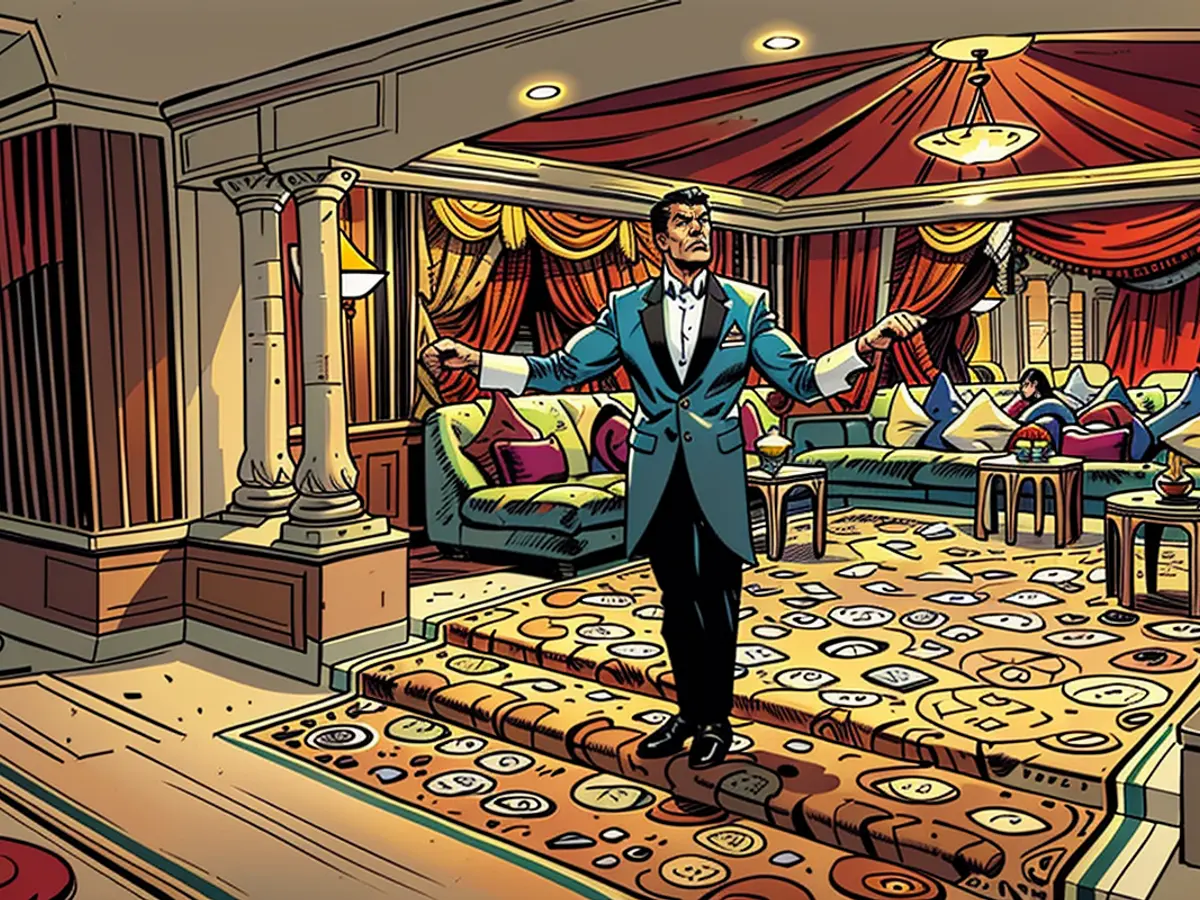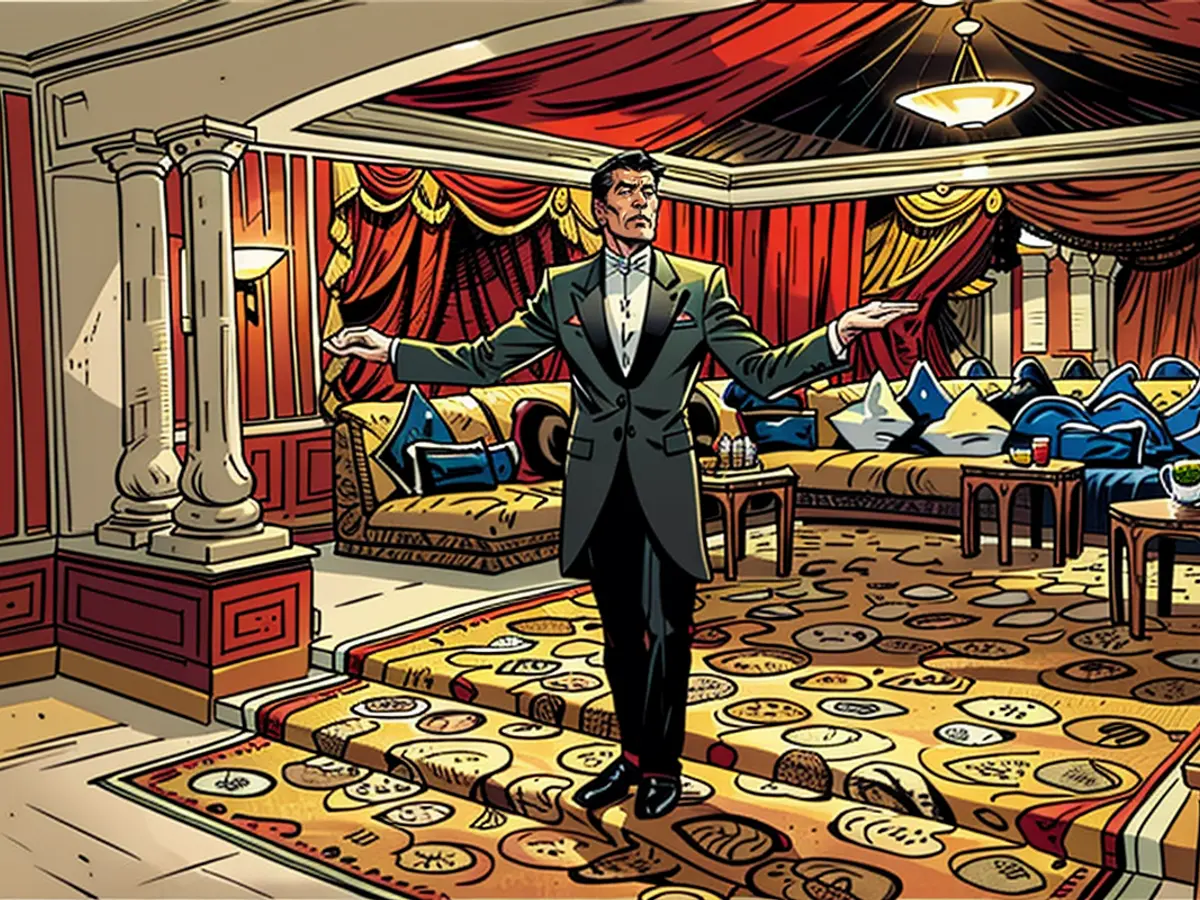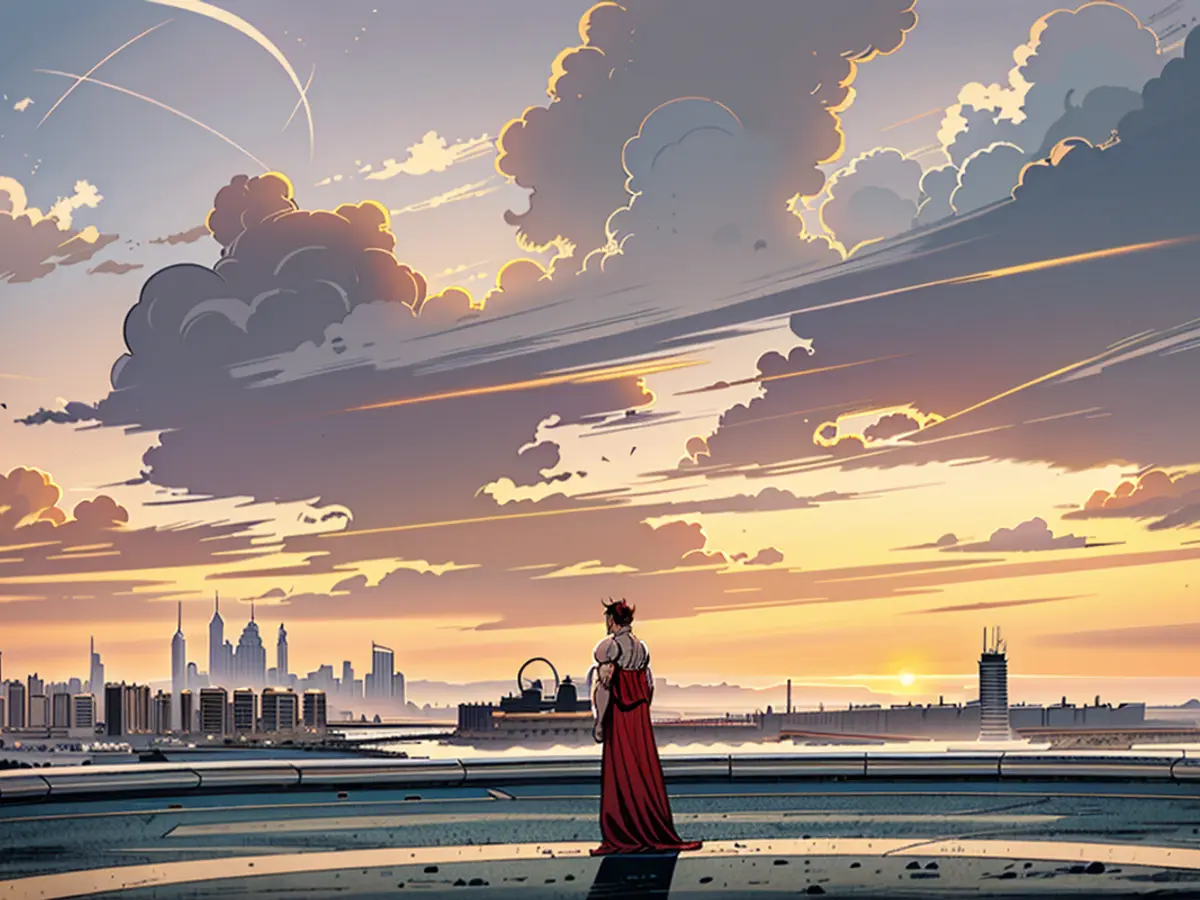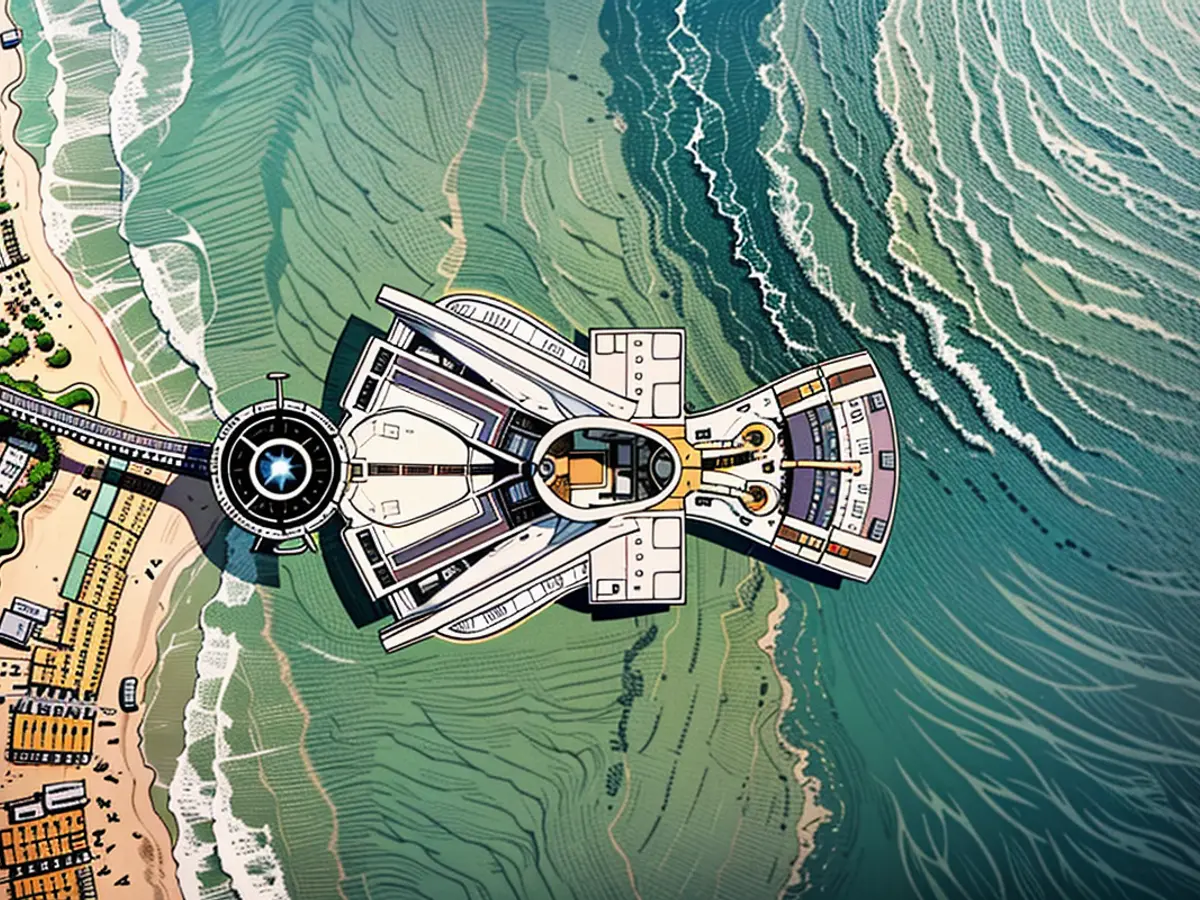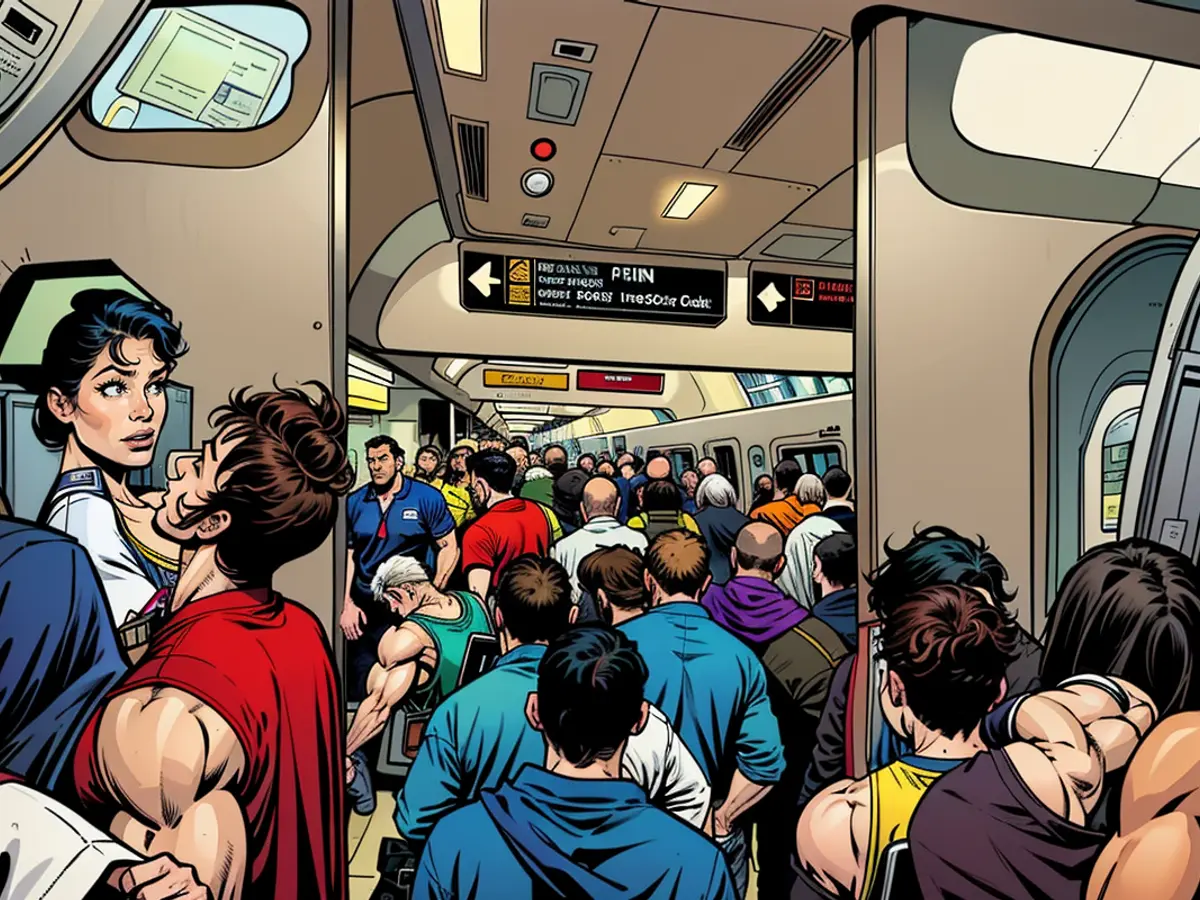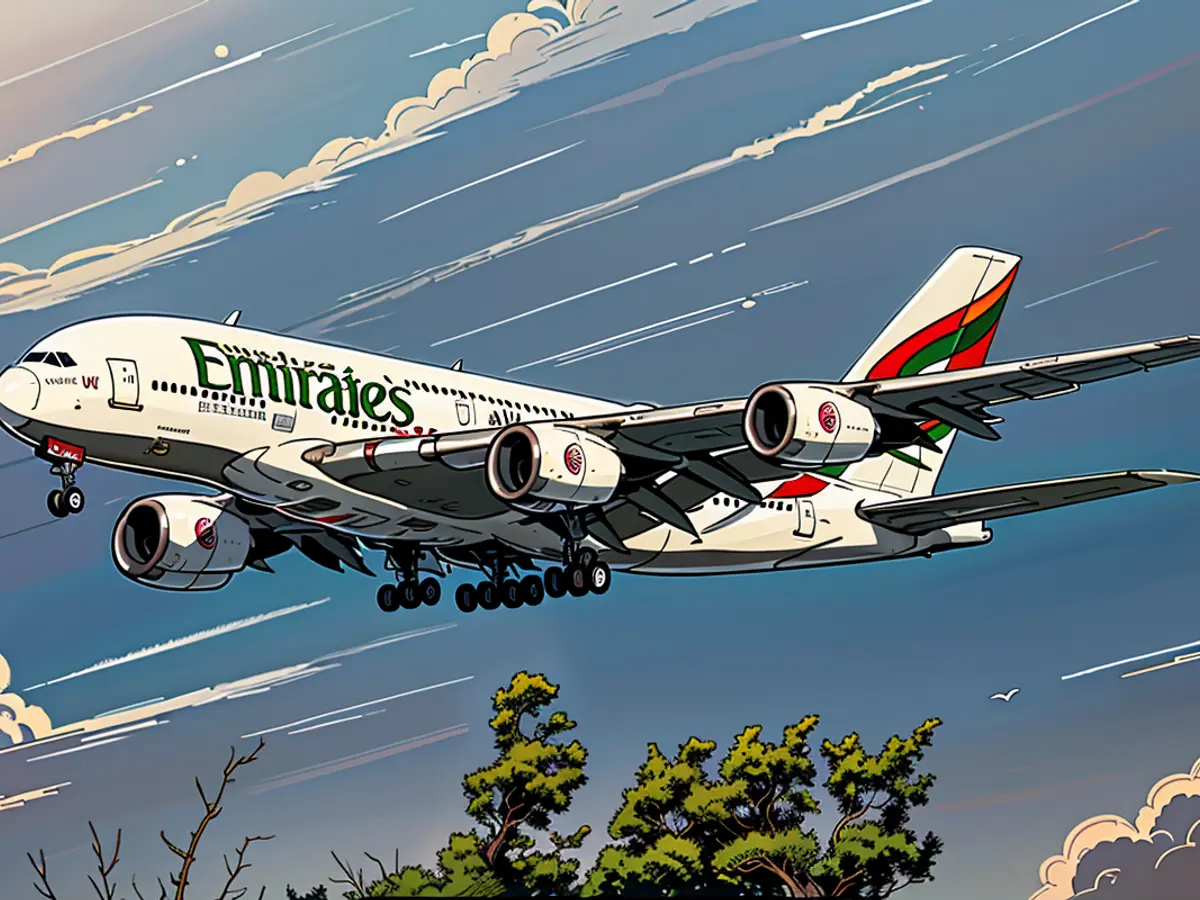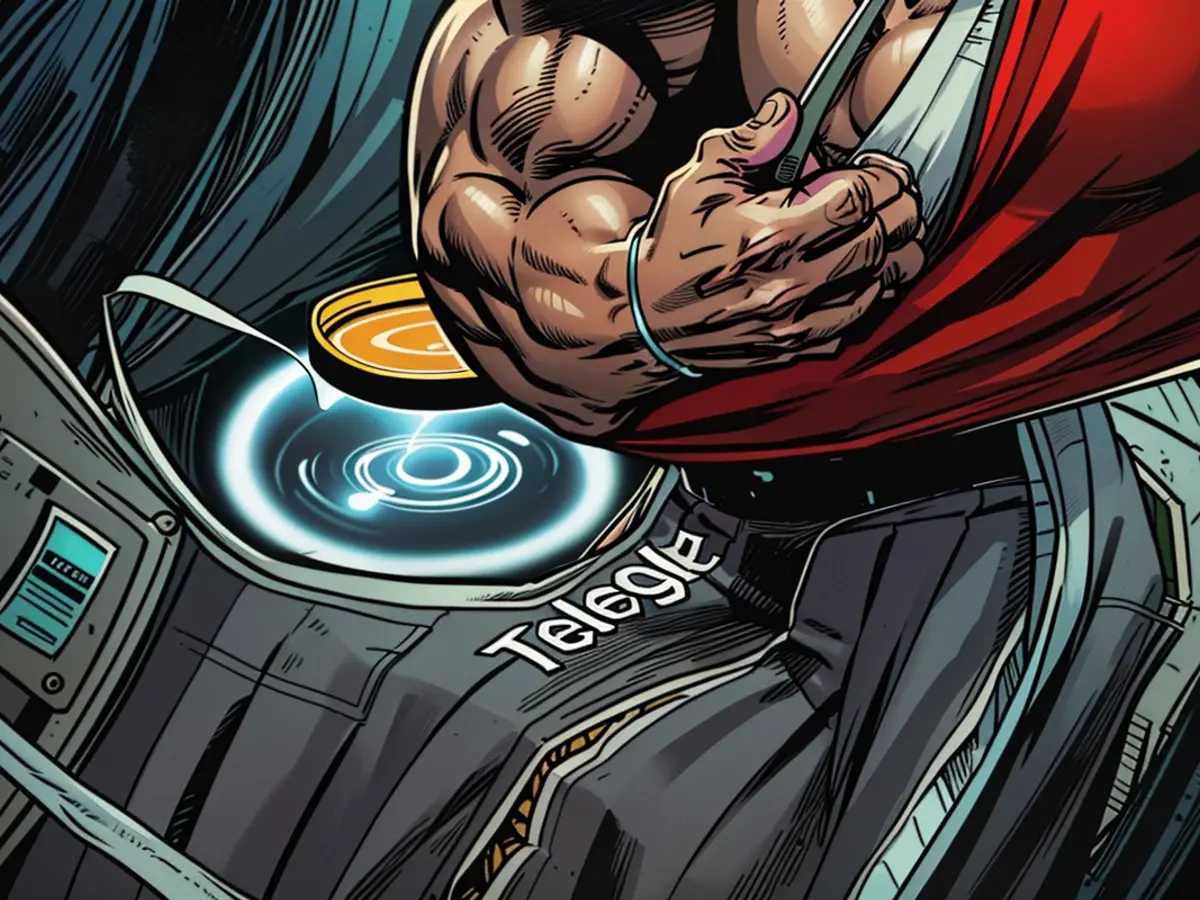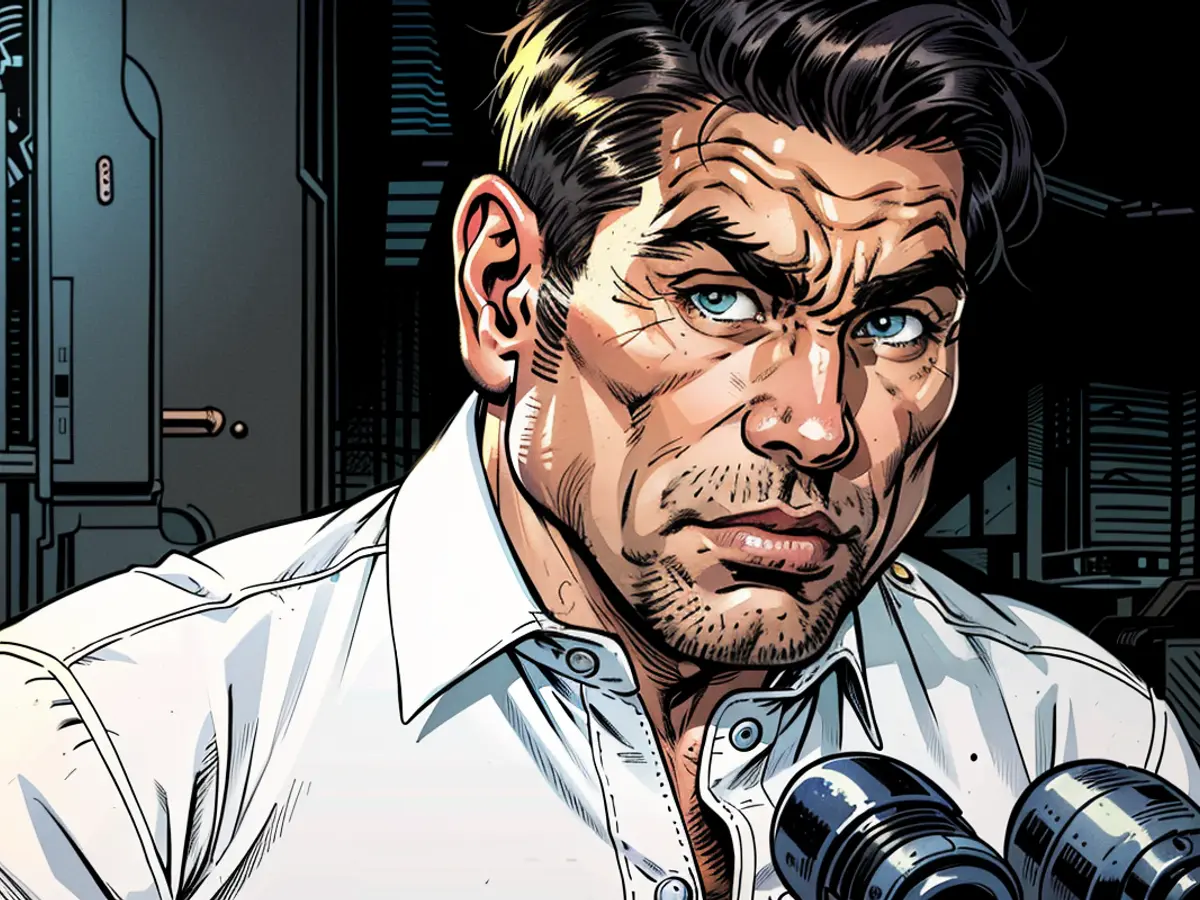El 'helipad reconocido mundialmente' situado en Burj al Arab celebra su 25 aniversario.
El sector financiero y de la construcción aún no había alcanzado su máximo auge. La ciudad aún no había obtenido el reconocimiento como un centro para los acaudalados e influyentes. En ese momento, la estructura más alta seguía siendo el primer rascacielos construido en Dubai: el Centro de Comercio Mundial, con una altura de solo 149 metros.
Ese año, la renombrada firma de arquitectura británica Atkins Global fue contactada por la oficina del gobernante de Dubai con un mandato para diseñar un edificio que dejaría una marca indeleble en la comunidad global, vinculándola a los EAU. Esencialmente, querían poner a los Emiratos en el mapa mundial.
Simon Crispe, director gerente de Atkins en el Medio Oriente en ese momento, recordó haber sido pedido que proporcionara a los EAU un símbolo visual de importancia, similar a la Ópera de Sídney para Australia o la Torre Eiffel para Francia.
Un equipo internacional de arquitectos pasó los siguientes siete años en secreto, formulando el concepto de una isla artificial y construyendo un edificio de 321 metros de altura.
El majestuoso Burj al Arab (que significa "Torre Árabe" en árabe) fue revelado en 1999, convirtiéndose posteriormente en un atractivo para la élite internacional. Ahora es sinónimo de lujo, que va desde suites lujosas hasta vida marina rara alojada en el acuario.
Sin embargo, es una característica específica la que ha contribuido probablemente más a la reputación del Burj.
Una vista desde las alturas
A 212 metros sobre el nivel del mar, el hotel presume de una helipista que sobresale peligrosamente de la estructura en forma de vela del edificio.
Según Anthony Costa, exdirector general del Burj al Arab, la principal dificultad fue garantizar la solidez estructural de la helipista mientras se alineaba con el diseño arquitectónico general del hotel. La helipista de 27 metros de ancho puede soportar un máximo de 7,5 toneladas.
"La helipista tuvo que cumplir con los requisitos estructurales y de aterrizaje seguro", dijo Crispe a CNN en 2019. "Buscamos un soporte de acero visible mínimo, queriendo que pareciera que 'flotaba'".
La helipista sirve principalmente como parte del servicio de conserjería de lujo del hotel, con opciones de recojo en el aeropuerto en Rolls Royces o traslados en helicóptero. La opción de transporte aéreo es una de las preferidas de los huéspedes, según Costa, con numerosos pasajeros y salidas mensuales en helicóptero.
Hazañas legendarias
More than its primary function, the helipad is widely known for showcasing death-defying and simply dazzling stunts.
Swiss tennis ace Roger Federer kicked off the trend in 2005, playing an exhibition game against Andre Agassi on a makeshift court, with the footage captured from a helicopter. Federer would return to the helipad in 2012, partnering with Novak Djokovic.
The helipad has even been transformed into a mini-golf course for golfing legends like Tiger Woods and Rory McIlroy to tee off over the Persian Gulf.
In 2017, the helipad hosted a makeshift boxing ring for British boxer Anthony Joshua to train.
The most daring stunt to date occurred in 2013, with a Formula 1 racing car being airlifted onto the helipad, allowing David Coulthard to perform "doughnuts" on a customized surface. Atkins engineers were called upon again to ensure the spectacle could be executed safely.
Since then, the helipad has become a platform for thrill-seekers and daredevils, hosting record-breaking kiteboarding jumps, BMX stunts, and skydives. In 2023, Polish pilot Lukasz Czepiela made aviation history by becoming the first person to land a plane on the Burj Al Arab's helipad.
Numerous other stunts are declined, according to Costa: “Each proposed stunt undergoes a thorough evaluation of logistical, safety, and feasibility aspects before it proceeds”.
Venue for weddings
Stunts catapulted the helipad into international fame, but the hotel also introduced safer ways to appreciate it.
Since 2014, the helipad has been available for ceremonies coordinated by a specialist "wedding architect," with a starting price of $55,000, although some events have reportedly surpassed millions in cost.
The location is also reserved for extravagant private parties with customizable decorations. Costa's favorite helipad moment came with a guest's 50th birthday celebration in 2018:
“We repainted the helipad to read ‘Happy Birthday’ with her name, which she could see from the helicopter as she landed,” he recounted.
Such lavish events and expenditures may appear frivolous, but as a symbol of Dubai's grandeur and spectacle, there's a responsibility to uphold these lavish occasions.
As Costa explains, the burj al Arab events are “elevating Dubai and its reputation for delivering unforgettable experiences”.
Government ministries often collaborate with the hotel to conduct helipad events and heavily utilize it in promotional campaigns.
The Burj al Arab was initially commissioned with the intention of establishing Dubai and the UAE on the global map.
A quarter-century after its unveiling, that ambition has been realized – thanks in no small part to the world's most famous helipad.
An editor's note: This story was originally published in 2019, and was updated in August 2024.
After the grand opening of the Burj al Arab in 1999, it quickly became a magnet for the international elite, offering luxurious experiences like helicopter transfers to guests.
Famous personalities, such as tennis star Roger Federer, have even utilized the helipad for unique events, such as playing an exhibition game with Andre Agassi.
